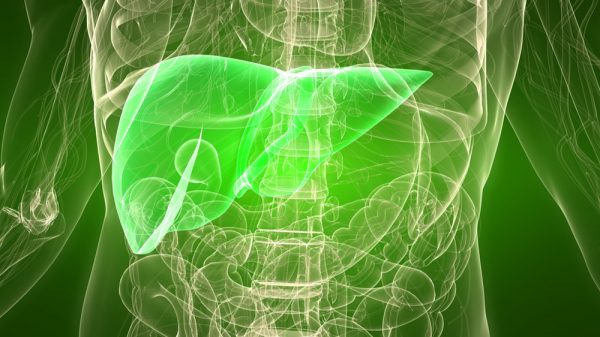Are you considering a liver transplant? If so then you should know about the Model for End-Stage Liver Disease or MELD score cirrhosis. Every year there are about 8,000 liver transplants in the USA. If you want to get a liver transplant then you’ll have to take various steps to secure an organ. They include various factors including medical history, financial resources, and matching liver. The MELD score is critical because it determines how soon you can get a donated liver based on your damaged liver’s current status. Even if you’ve been diagnosed with cirrhosis there’s no guarantee that you’ll qualify to be placed on the waiting list for a new liver. For example, your liver might not be damaged enough to qualify for an organ transplant.
The MELD score evaluates patients with the chronic liver disease based on lab results. These figures are used to project the chance of 3-month survival. The MELD score then determines your position on the waiting list. The MELD score can change based on future lab tests so it’s critical to have them tracked to determine if your placement on the waiting list causes you to move up on the waiting list. This could happen if your liver’s health worsens.
What Exactly Is a Liver Transplant?
This procedure involves removing the damaged liver that’s experiencing liver failure. A healthy liver is then inserted. It could be a partial liver from a living donor or a whole liver from a deceased liver.
When a partial liver is added the donor’s liver grows back within weeks. This option can help to improve the liver’s function until a whole liver can be found. In some cases, this type of liver transplant is also more practical depending on how damaged the liver is.
A related factor is that there are more people waiting for a liver than donors. This helps to explain the importance of the MELD score in providing an objective way to prioritize people with late-stage cirrhosis.
Every year there are more people looking for a new liver. Since finding the right donated liver can be tough this highlights the importance of slowing down liver scarring as much as possible. There are various steps cirrhosis patients can take like ditching alcohol, eating a healthy diet, and treating cirrhosis complications.
There are various reasons for liver transplants are done. The main reason is that a person’s liver function is affected by health conditions like liver disease and liver cancer. Cirrhosis involves four stages with the last one being liver failure. This can happen quickly but usually, it’s over a long timeframe.
In many cases, liver failure happens over a long time period. That’s due to gradual damage to the organ due to factors like heavy drinking, bad diet, hepatitis infection, prescription meds, etc. Regardless of what causes the liver failure the only “cure” for this late-stage liver cirrhosis is an organ transplant.
This transplant is usually used to treat “chronic” instead of “acute” liver failure. This type of liver failure happens gradually for months or even years. Cirrhosis is the most common cause. This involves scar tissue and the liver’s function is affected.
MELD Score Cirrhosis: What is It?
The Model for End-stage Liver Disease (MELD) is used to estimate how serious liver disease is and the patient’s chance of survival. The MELD score can function as a critical tool for providing effective patient care. There’s a similar system called PELD, which is used for children less than 12 years old.
The MELD score is a number that ranges between 6 and 40. It’s based on different kinds of lab tests. The score shows the amount of sickness a person is experiencing. That determines how soon you require an organ transplant. A higher number shows that the situation is more urgent.
There are various serious health conditions that can result in live failure including:
- Hepatitis
- Cirrhosis
- Bile duct blockage
- Heavy alcohol drinking
In order to qualify for a liver transplant, the transplant team will evaluate your situation. That includes your medical history, financial resources, etc. You’ll then receive a MELD score that determines where you’re placed on the waiting list for a liver transplant.
There are several lab tests that are performed to calculate the MELD score. However, the overall factor is your survival rate during the next three months. If your liver function has decreased significantly then you’ll be placed high on the list and will qualify for getting a liver transplant soon.
The score will also be recalculated within a certain timeframe based on your score. For example, if the score is 25 or higher it will get calculate again every week. Meanwhile, if it’s under 10 then it will get recalculated one time every year.
THE MELD score is a good indicator of how soon you’ll need a liver transplant. However, there are some things it doesn’t include. They include the wait time on the liver transplant list. Other key factors include:
- Body size
- Geographic distance to donated liver
- Blood type
- Supply/Demand for livers in a region
- Donor Age
Top Tips for Treating Liver Cirrhosis
1. Learn about medicines for complications
If you have certain cirrhosis complications, talk to your doctor about medication options. The pharmaceutical industry is always developing new medicines for treating various health conditions linked to cirrhosis.
It’s important to find out the details about certain medicines. That includes issues like dosage, side-effects, and risks. You should also inform your doctor of any medicines/supplements you’re already taking. That will help to avoid possible “interactions” caused by combining certain ones.
2. Take hepatitis medicines
Viral infections like hepatitis are one of the main health conditions linked to cirrhosis. Hepatitis A/B/C can become a cirrhosis complication that makes your disease worse. There are various medications on the market that can help to treat hepatitis effectively. They can also help to slow down the progression of tissue scarring.
3. Learn about liver transplant
This is the only real “cure” for cirrhosis. It’s a complex and expensive process. It’s important to learn about the basics of your doctor. That includes how to qualify, ways to get financial assistance, MELD scores, and so on. One key factor is that there are more patients than donors, so it can be tough to find the right donor even if you qualify for an organ transplant.
4. Shed pounds
Keep in mind that fatty liver and fatty liver disease (FLD) are key factors that can lead to cirrhosis over disease. High body fat can cause issues related to high liver fat. Meanwhile, losing weight and burning fat can help to reduce fat buildup in the liver. It can also help with issues like lowering blood sugar levels.
5. Stop drinking alcohol
It’s important to take this step and especially if you have alcohol-liver cirrhosis. In that case, it’s important to stop alcohol-caused damage. The effects of any alcohol on a heavily-scarred liver can be devastating. It’s critical to quit cold turkey to help prevent a higher meld score cirrhosis.























